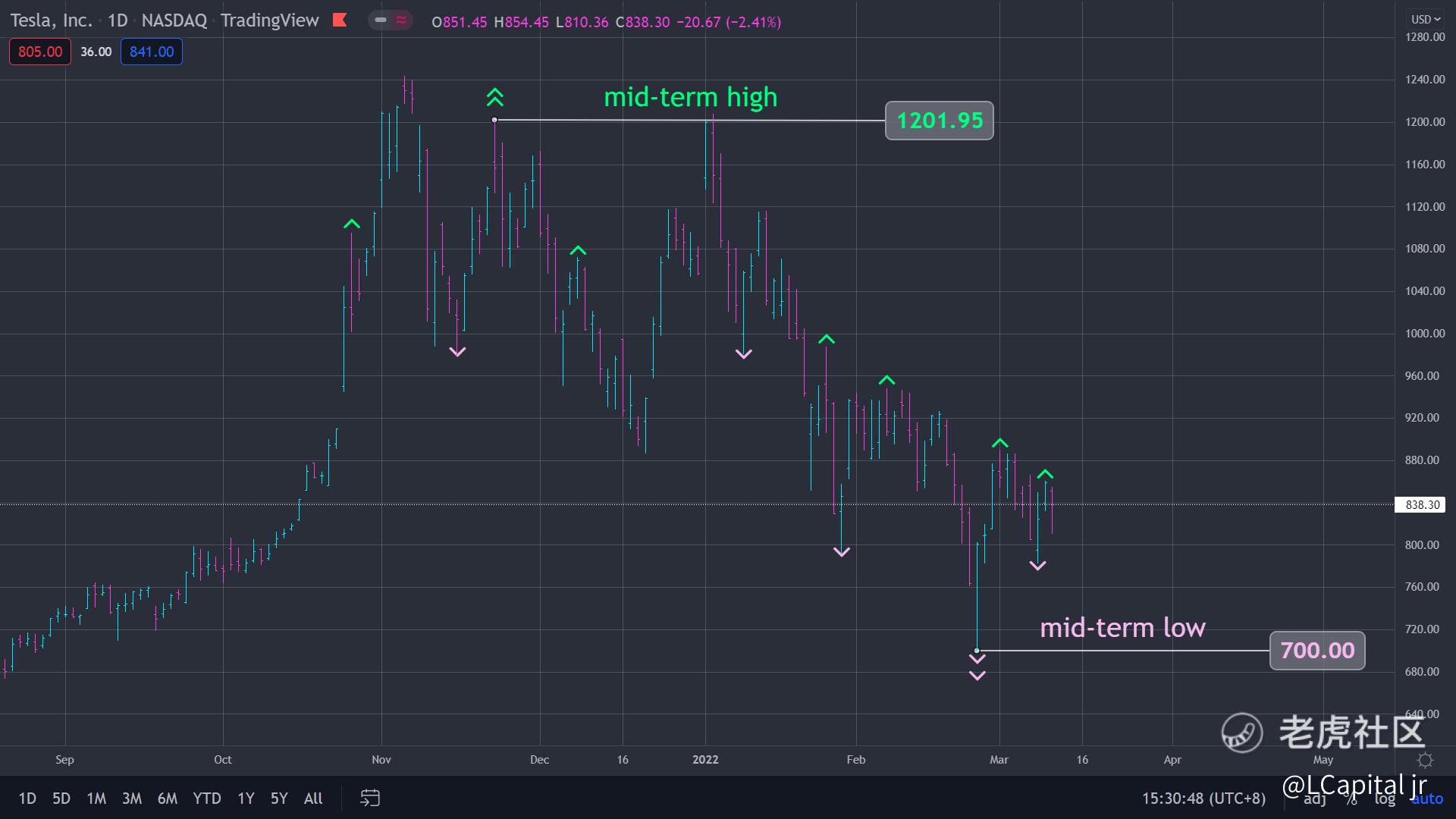If you use the following simple formula to define short-term market lows. If you can learn this basic concept, you can gradually understand the entire market structure.
Whenever a daily low is flanked by a higher low, that low is a short-term low. Market movement has taught us that if price action on the day of the low was down, and then climbed again because there was no new low, then that low was recorded as a short-term low.
Short-term market highs are the exact opposite. Here we see lower highs flanked by highs, so that's because prices make their highest intraday highs and then start to pull back, thus making short-term highs.
If you understand the concept, we can put these elements together. You may have figured out the answer: the market swings from short-term highs to short-term lows.
If we can find short-term highs with lower highs on both sides (except the bullish and bearish engulfing), we can define a mid-term high as a short-term high with lower short-term highs on both sides. To go further, a mid-term high with lower mid-term highs on both sides is a long-term high.
I use these to trade. these useful price points are the most effective support and resistance I know yet. and once these prices are break, they will reveal a very important information about the market movement. Therefore, I can use them as a stop loss or trigger.

Comments